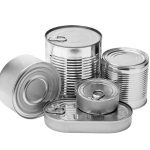Proposed New Regulatory Framework for Consumer Chemical Products
Proposal to Remove the Exemption
In 2023, Health Canada published a notice of intent (NOI) to consult stakeholders on a proposal that has far-reaching implications for manufacturers, importers, and suppliers of consumer products in Canada. The proposal sought to remove the exemption that currently excludes consumer products from the Schedule 1 of the Hazardous Products Act (HPA)- a framework that governs workplace hazardous product labeling and safety data sheet (SDS) requirements through the Workplace Hazardous Materials Information System (WHMIS).
Currently, consumer products are regulated under the Canada Consumer Product Safety Act (CCPSA) and the Consumer Chemicals and Containers Regulations (CCCR, 2001). These products are explicitly exempt from the HPA and associated WHMIS obligations, provided they are sold to the general public for personal use. The proposed change would close this regulatory gap, bringing consumer products under the umbrella of WHMIS 2015, which incorporates the Globally Harmonized System of Classification and Labelling of Chemicals (GHS).
This blog post provides an overview of the proposal, key regulatory frameworks involved, and what industry stakeholders need to know as the timeline for regulatory change progresses.
Overview of Key Regulatory Frameworks
To fully understand the implications of the proposal, it’s important to differentiate the two main regulatory systems currently governing chemical products in Canada:
- Canada Consumer Product Safety Act (CCPSA): The CCPSA governs the safety of consumer products, ensuring that items sold to the public do not pose an unreasonable danger to health or safety. It is enforced by Health Canada and includes provisions for recalls, safety testing, and marketplace surveillance.
- Consumer Chemicals and Containers Regulations (CCCR, 2001): Under the CCPSA, the CCCR establishes classification criteria, labeling standards, and container requirements for chemical products sold to consumers. It is intended to help consumers handle household chemicals safely. Such products include household cleaning products, adhesives, paints, and lubricants.
- Workplace Hazardous Materials Information System (WHMIS 2015): This system aligns with the 7th/8th edition of the Globally Harmonized System (GHS) of Classification and Labelling of Chemicals and is Canada’s national communication standard for hazardous workplace products. WHMIS requires suppliers to provide detailed hazard information through safety data sheets and standardized product labeling. Requirements are outlined in the Hazardous Products Regulations (HPR).
At present, a consumer chemical that falls under the CCCR is exempt from WHMIS regulations.
Key Points of the Notice of Intent
Health Canada’s proposed removal of the consumer product exemption from the Hazardous Products Act would create a unified approach to hazardous product communication- closing regulatory gaps and enhancing consumer safety. The proposal includes several critical elements:
- Classification criteria: Unlike the HPR, the CCCR does not address health concerns such as carcinogenicity, germ cell mutagenicity, reproductive toxicity, and respiratory or skin sensitization. The NOI proposes to introduce requirements for consumer products to disclose these chronic hazards.
- GHS alignment: Consumer products’ information disclosure requirements would be based on GHS label elements, including hazard statements, precautionary statements, and ingredient disclosure requirements.
- Merging regulatory approaches: The CCCR would either be replaced with a risk-based GHS framework, or a hybrid classification and labelling system would emerge. Consumer products would need to be accompanied with a Safety Data Sheet (SDS).
The proposal aims to reduce the burden for industry supplying chemical products to both consumer and industrial markets, while simultaneously enhancing protections for users of consumer chemical products. In addition, industry would have a consistent approach for classification using a globally recognized system.
Regulatory Path Forward
Below is the tentative timelines for consultations, per the Consumer Product And Safety Directorate.
Proposed Topics | Timeline |
Overview of stakeholder feedback, research summary, public opinion, and regulatory approach analysis | Jan- March 2025 |
Consumer product scope, definitions, exclusions, and other provisions | June – Sept 2025 |
Hazard classification and risk characterization of chemical consumer products | Oct- Dec 2025 |
Disclosure requirements and labeling | Jan- Mar 2026 |
Additional protections (prohibitions, restrictions, child resistant packaging) | April- June 2026 |
Conclusion: A Step Toward Greater Hazard Communication Consistency
The proposed elimination of the consumer product exemption from the Hazardous Products Act is a pivotal step toward harmonizing hazard communication standards across workplace and consumer markets. While the full implementation may still be a few years away, proactive planning and early compliance assessments will be essential for a smooth transition.
With over 40 years of experience in regulatory consulting, GHS classification, and chemical safety compliance, Dell Tech is ready to guide businesses through this evolving regulatory landscape. Whether you need support with CCCR classification, WHMIS label updates, or SDS authoring, our team of experts is here to help ensure your products meet both current and future Canadian compliance standards.
Need Help Navigating WHMIS and CCCR Compliance?
Contact Dell Tech Laboratories today to learn how we can support your regulatory journey.
DELL TECH HAS PROVIDED PROFESSIONAL, CONFIDENTIAL CONSULTING SERVICES TO THE SPECIALTY CHEMICAL INDUSTRY IN CANADA, THE USA, EUROPE AND ASIA FOR THE LAST 40 YEARS.





